NBA 2K Badges System: The Ultimate Guide to Mastering Your MyPLAYER
Updated On: November 12, 2025 by Aaron Connolly
Understanding the NBA 2K Badges System
The NBA 2K badges system shapes how your player performs on the court using special abilities that boost specific skills.
Badge perks and updates in NBA 2K24 have really changed how we unlock and develop these crucial features.
What Are Badges and How Do They Work?
Badges give your player special abilities that improve performance in different parts of the game.
You unlock badges by meeting certain criteria while playing.
There are 77 skill badges across the game modes. Each one boosts a skill like shooting, defense, or playmaking.
Badge Tiers:
- S-Tier: Top-level badges
- A-Tier: High-level badges
- B-Tier: Middle-tier badges
- C-Tier: Entry-level badges
Your player’s height and position decide which badge tiers you get. A 6’0″ point guard doesn’t have the same badge options as a 7’3″ center.
Badge levels go up when you use those skills more often. If you keep hitting threes, your shooting badges level up pretty fast.
Badges you ignore will drop a level, but they won’t go below Bronze.
Quick win: It’s usually smarter to focus on just a handful of badges instead of spreading your points everywhere.
Badge Perks and Their Impact
Badge perks give extra bonuses that help—or sometimes hurt—badge progression.
These perks force you to make choices about how you develop your player.
The Scholar perk, for example, speeds up badge progression if you finish player-versus-player games with high teammate grades. But if you end up with poor grades, you get nothing.
Performance multipliers reward you for playing well. Strong in-game performance means your badges develop faster.
Warning: Some badge perks actually slow you down if you don’t keep your performance up.
This all leads to some interesting trade-offs. If you specialize in a few skills, you get fewer badges but at higher levels.
Players who try to do everything end up with more badges, but most of them stay at lower levels.
So, you’ll want to decide early if you want to be a specialist or a jack-of-all-trades.
Recent Changes and System Updates
NBA 2K24 brought in some big changes to badges compared to past games.
The new system responds to feedback about expensive upgrades and not enough customization.
Visual Concepts got rid of the replica build glitch from NBA 2K23, but now you can use official NBA player templates.
You can start with builds based on real NBA players or make your own from scratch.
Key NBA 2K24 Changes:
- Four badge tiers (S, A, B, C)
- Height-based tier access
- Dynamic badge leveling
- NBA player templates
- Better progression system
Takeovers aren’t part of the builder process anymore. Now, they just happen during games if you perform well.
Badge progression matches your play style instead of just attribute points. The system feels more realistic and honestly, it’s more fun for different types of players.
Quick win: Try out NBA player templates before you make your own build. It’s a great way to see how badges work together.
Types of NBA 2K Badges
NBA 2K25 has 40 badges split into six main categories. These categories define how your player performs on the court.
Each badge type focuses on skills like finishing at the rim, shooting, creating plays, or defending.
Finishing Badges Overview
Finishing badges help you score near the basket with layups, dunks, and post moves.
They’re a must for centers, power forwards, and guards who attack the rim.
The Posterizer badge boosts your chances of dunking on defenders. You need at least 73 Driving Dunk and 65 Vertical for Bronze.
Physical Finisher helps you score through contact. You’ll need 60 Strength and 70 Driving Layup for Bronze.
Paint Prodigy increases close-range scoring. You need a 73 Close Shot and must be at least 6’3″ tall to unlock it.
Float Game makes floaters better. You can unlock Bronze with either 68 Close Shot or 65 Driving Layup.
Other finishing badges include Layup Mixmaster for fancy layups, Rise Up for standing dunks, and a few post-move specialists.
Shooting Badges Overview
Shooting badges make you better at scoring from mid-range and deep. Guards and forwards who space the floor really need these.
Deadeye cuts the penalty from contested shots. You need 73 Mid-Range or 73 Three-Point for Bronze.
Limitless Range lets you hit threes from way out. You’ll need 83 Three-Point for Bronze, and 99 for Legend.
Shifty Shooter helps with off-the-dribble shots. You need 60 Agility plus 76 Mid-Range or Three-Point. Height is capped at 6’11”.
Set Shot Specialist boosts stand-still jumpers. The Bronze requirement is just 65 Mid-Range or Three-Point.
Mini Marksman is just for players 6’3″ and under. It helps shorter players shoot over taller defenders.
Playmaking Badges Overview
Playmaking badges boost ball-handling, passing, and creating shots for teammates.
Point guards and facilitators lean on these a lot.
Dimer raises your teammates’ shooting percentage when you hit them with a pass. You only need 55 Pass Accuracy for Bronze.
Ankle Assassin helps you break down defenders with dribble moves. You need 75 Ball Handle and must be 6’10” or shorter.
Handles for Days cuts down on energy loss from dribbling a lot. You need 71 Ball Handle for Bronze.
Bail Out lets you pass accurately when you’re stuck or jumping. It needs 85 Pass Accuracy for Bronze, so it’s tougher to get.
Lightning Launch gives you a quicker first step. You need 68 Speed With Ball and must be under 7’0″.
Defence Badges Overview
Defence badges help you guard, steal, and protect the rim.
Every position needs these, but defensive specialists rely on them most.
Defensive badges usually cover perimeter defense, stealing, and rim protection. You’ll need attributes like Perimeter Defence, Interior Defence, Steal, and Block.
Some badges have height restrictions.
If you’re focused on defense, prioritize badges that match your role. Perimeter defenders want steal and contest badges, while rim protectors need shot-blocking.
Badge requirements go from Bronze to Legend, with higher tiers needing better attributes.
Finishing Badges Explained
Finishing badges in NBA 2K25 help you score better near the basket. They cover driving layups, dunks, and close shots.
There are 11 finishing badges, each focusing on a different way to score inside.
Boosting Driving Layup and Dunking
Physical Finisher stands out as the top badge for driving layups. It helps you power through contact and make tough shots at the rim.
This badge is perfect for players who attack the basket hard.
Posterizer and Rise Up take care of dunking. Posterizer boosts your chances of dunking on defenders.
Rise Up helps you dunk better when you’re already in the paint.
Paint Prodigy speeds up your moves in the paint. You’ll finish faster and more efficiently close to the basket.
This badge fits aggressive drivers.
The Aerial Wizard badge is for alley-oops and putback dunks after offensive rebounds. Big men who clean up missed shots or catch lobs really need this one.
Mastering Float Game and Hook Specialist
Float Game makes floaters work better for guards and forwards. Floaters help you score over taller defenders.
This badge is handy when you drive into crowded lanes.
Hook Specialist is all about post hooks. Centers and forwards use it when posting up smaller players.
Hook shots give you space and are tough to block.
Layup Mixmaster gives you creative layup animations. It helps you pull off acrobatic finishes.
Guards with high ball-handling love this badge for wild finishing angles.
Each of these badges fits a certain play style. Float Game is for guards who drive, and Hook Specialist is for post players.
Key Finishing Badge Examples
Paint Patroller on defense can stop a lot of finishing badges.
But Immovable Enforcer helps offensive players keep their strength when defenders try to knock them off their path.
| Badge | Best For | Effectiveness |
|---|---|---|
| Physical Finisher | Contact layups | High |
| Float Game | Avoiding blocks | Medium |
| Hook Specialist | Post scoring | Medium |
| Rise Up | Paint dunks | High |
Post Powerhouse and Post Up Poet work great for classic post play. Post Powerhouse helps you back down defenders.
Post Up Poet increases your post move success.
Post Fade Phenom adds fadeaway shots to your post game. It’s a good way to create space against tight defense.
Shooting Badges in Detail
Shooting badges directly affect how well you score from anywhere on the court.
These five badges help with contested shots, deep threes, and shooting over defenders.
Improving Open Looks and Spot Finder
Getting good shooting opportunities is what wins games.
The Set Shot Specialist badge boosts your chances with stand-still jumpers. So, catch-and-shoot plays become much more reliable.
When it comes to contested shots, Deadeye cuts the penalty when defenders rush you. You’ll make more shots even if someone’s closing out.
The Mini Marksman badge helps smaller players. It raises your shooting percentage when taller defenders try to contest.
If you’re building a short shooting guard, this badge is a must.
Shifty Shooter is for tough shots off the dribble. Pull-ups and step-backs get a big boost.
These are the shots that make scorers stand out.
Essential Shooting Badge Examples
Limitless Range lets you shoot threes from way out. Without it, deep shots rarely fall.
With this badge maxed, you become a threat from almost anywhere.
Here’s how these shooting badges work together:
| Badge | Best For | When to Use |
|---|---|---|
| Deadeye | Contested shots | When defenders close out |
| Set Shot Specialist | Catch and shoot | Spot-up opportunities |
| Limitless Range | Deep threes | Beyond normal range |
| Mini Marksman | Height mismatches | Against taller defenders |
| Shifty Shooter | Off-dribble shots | Creating your own shot |
Most shooters start with Deadeye and Set Shot Specialist. These two cover most shooting situations.
Boosting Free Throws and Clutch Performance
NBA 2K25 doesn’t have specific badges for free throws or clutch shots in its 40-badge system.
The game just focuses on general shooting improvements.
Your free throw success still depends on your Free Throw rating. Higher ratings make the timing easier.
The shooting badges above still help when the game’s on the line.
Deadeye is huge in pressure moments when defenders contest every shot.
Shifty Shooter helps when you need a tough shot with the clock running down.
Clutch performance comes from mastering the main shooting badges. We suggest focusing on Deadeye and Set Shot Specialist for reliable results when it matters.
Playmaking Badges Essentials
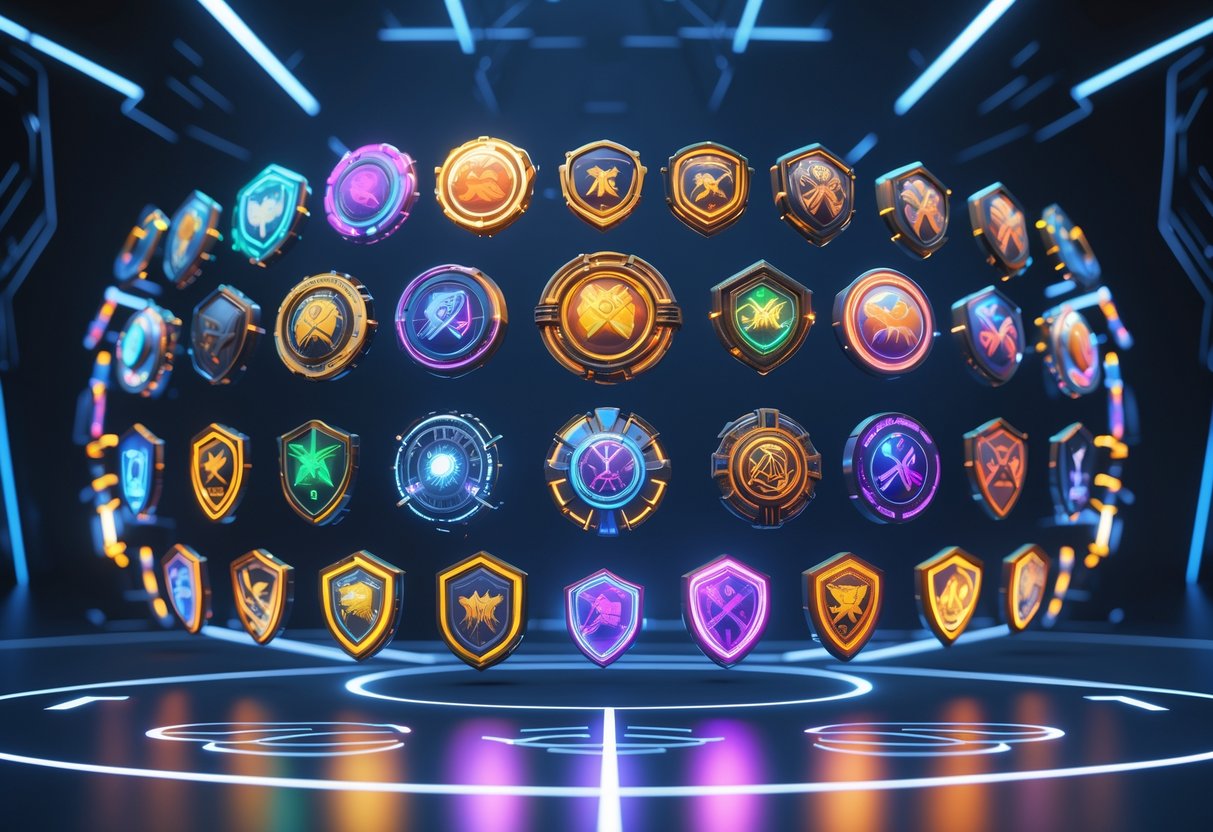
Playmaking badges can really change the way you handle the ball and pass, giving you more ways to help your team score. These badges focus on dribble moves, outlet passes, and building chemistry with teammates by giving your gameplay a boost.
Boosting Ball Handle and Passing
Strong ball handle badges keep you in control when defenders turn up the heat. Handles for Days lets you dribble longer without burning through stamina.
Killer Combos spices up your size-up moves. You’ll get flashier animations and break down defenders with a little more style.
Clamp Breaker keeps your dribble alive when defenders try to bump or strip the ball away. It’s a lifesaver in tight spots.
For passing, Needle Threader helps your risky passes reach teammates more accurately and cuts down turnovers.
Dimer gives your teammates a shooting boost whenever you assist. Even simple passes get this bonus, which makes it a must-have for point guards.
Break Starter lets bigs whip accurate outlet passes after grabbing boards. It’s great for launching fast breaks right away.
Executing Alley-Oops and Speed Boosts
You’ll get speed boosts by mixing the right badges and timing your moves. Quick First Step gives you a burst of acceleration out of size-ups.
Hyperdrive speeds up your dribbling overall. With this badge, you’ll blow by defenders more often.
Special Delivery makes your alley-oops more reliable and smoother. Better animations mean more successful lobs.
Vice Grip protects the ball after you catch passes or rebounds. If you handle the ball in traffic, this badge keeps you from getting stripped.
Bail Out lets you pass out of a bad shot animation with more accuracy. It’s perfect for those “oh no” moments.
Signature Playmaking Badge Examples
Different positions need different badge priorities. Guards usually go for Tier 3 badges like Killer Combos and Handles for Days since they dribble the most.
Wings (6’6″ to 6’9″) lean on Tier 2 badges. Quick First Step and Needle Threader fit their more limited playmaking roles.
Big men focus on Tier 1 badges like Floor General. This badge boosts every teammate’s ratings while you’re on the court.
Break Starter fits centers who grab rebounds and kick off fast breaks.
The badge tier system sets the point cost. Lower tiers cost less, but still give you solid upgrades.
Defensive and Rebounding Badges
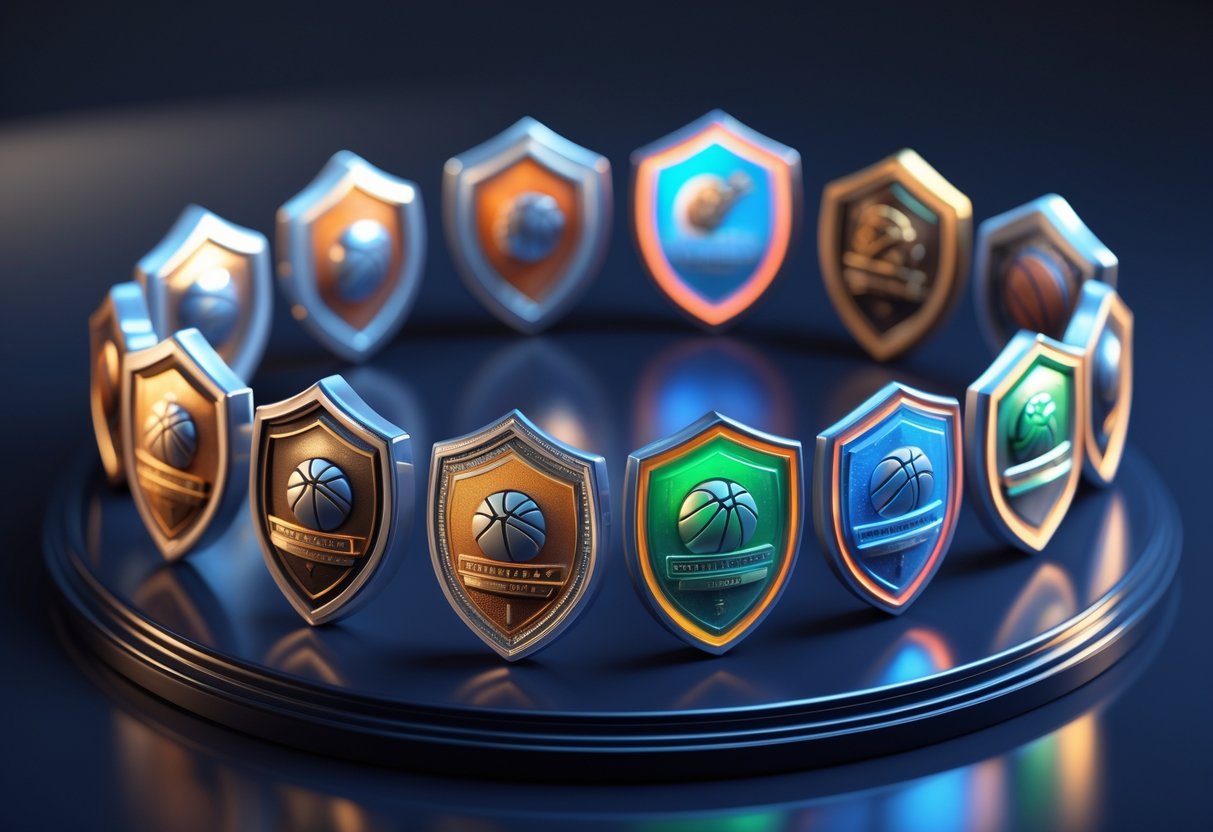
Defensive and rebounding badges turn your player into a lockdown defender who controls the perimeter and the paint. These badges help you steal passes, block shots, and own the glass on both ends.
Strengthening Perimeter and Interior Defence
Clamps stands out as the most important badge for perimeter defense in NBA 2K24. It helps you cut off ball handlers faster and stick to quick guards.
Ankle Braces pairs well with Clamps. It lowers your chances of getting your ankles snapped by dribble moves. Not everyone uses it, but it keeps you upright in big moments.
For interior defense, Anchor makes you a force in the paint. You’ll block more shots and protect the rim at a high level.
Pair Anchor with Post Lockdown to defend post moves and strip opponents down low.
Challenger helps you contest perimeter shooters more effectively. Timed contests force tougher shots, especially if you position yourself well.
Optimising Block and Steal Attributes
Chase Down Artist boosts your speed and hops when chasing down players for blocks. You’ll pull off more highlight-reel plays and help out on defense.
Pogo Stick lets you jump again quickly after blocks or rebounds. It’s key for contesting multiple shots or grabbing second-chance boards.
Glove raises your steal success against ball handlers. When you combine it with Right Stick Ripper, your steals get even better if you use the right stick.
Interceptor helps you tip or intercept passes in the lanes. If you position yourself right, this badge creates turnovers, especially in tight park games.
Enhancing Rebounding Performance
Boxout Beast gives you an edge in rebounding battles on both sides of the court. Centers and power forwards rely on it to secure the ball in traffic.
Rebound Chaser lets you track down long rebounds. It stretches your rebounding range so you can grab boards that would normally bounce away.
Work Horse boosts your hustle for loose balls. You’ll win more scrambles and create extra possessions for your team.
For defensive rebounding, box out your opponent first, then use your boosted attributes to grab the ball and push the break.
Badge Level Progression and Upgrade Pathways
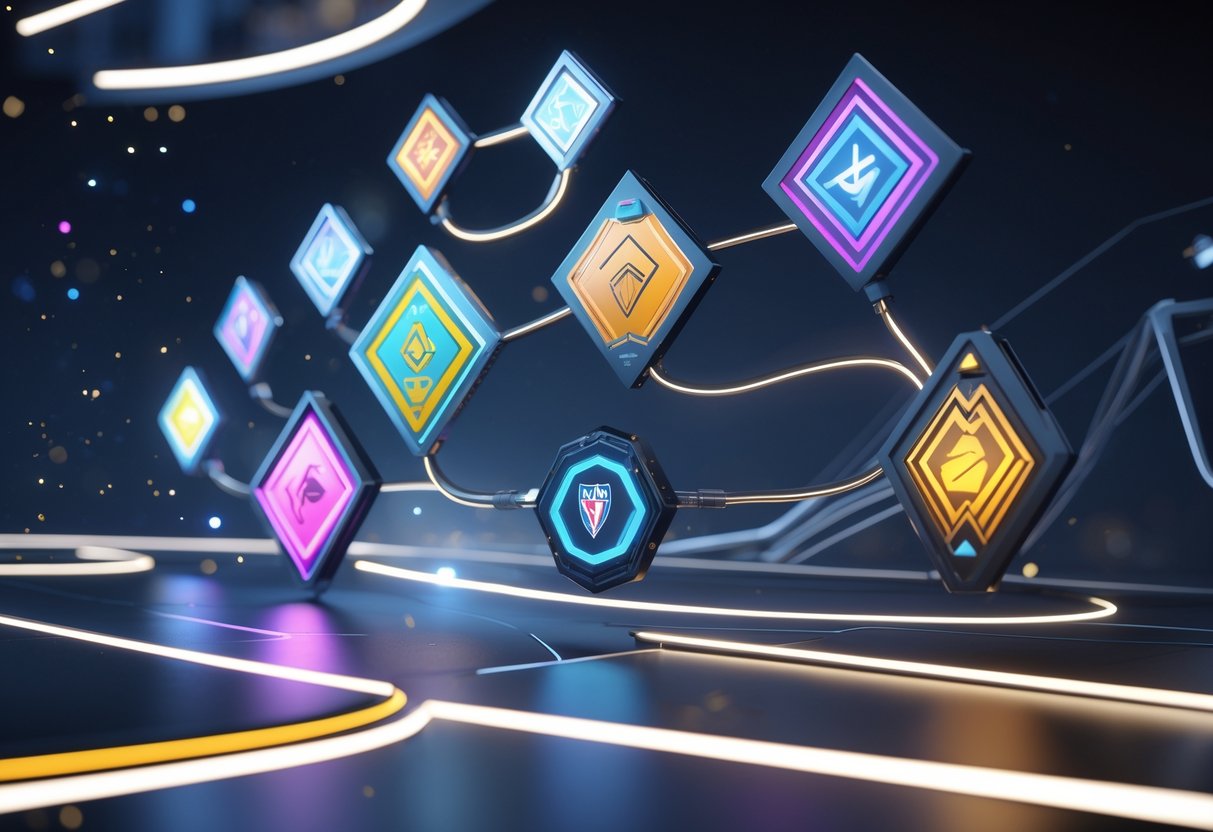
Badge progression in NBA 2K depends on your in-game actions. The more you use a badge, the more effective it becomes. Knowing how tiers, earning, and performance multipliers work can help you level up your MyCareer player faster.
Understanding Badge Levels
NBA 2K24 uses four badge tiers: Bronze, Silver, Gold, and Hall of Fame. Each one makes your player better at specific skills.
Bronze is your starting point. Once you unlock a badge, it never drops below Bronze, so you don’t lose progress.
Silver and Gold give you bigger boosts. You’ll need to show consistent performance in games to reach these levels.
Hall of Fame is the top tier. Only your most-used badges get here, and it takes real dedication.
Badge points by tier:
- Tier 1 badges: 1-4 points
- Tier 2 badges: 3-6 points
- Tier 3 badges: 5-8 points
Your player’s height decides which badges fall into which tier. Taller builds unlock different tier setups than shorter ones.
The system encourages you to specialise. If you focus on certain skills, you’ll level up those badges faster.
Earning Badge Points
You earn badge progress by playing well, not by buying VC. Your actions in matches speed up progress.
The more you use a badge, the faster it levels up. If you ignore a badge, it barely moves.
Performance requirements by badge:
- Shooting badges: Made shots, attempts, shooting %
- Defensive badges: Steals, blocks, stops
- Playmaking badges: Assists, passes, ball handling
MyCareer games give you the main way to progress. Every game is a chance to show off your skills.
Steady, regular performance matters more than one-off great games. Using badges consistently beats occasional big games.
Badge perks can help or hurt your progress. The Scholar perk speeds things up if your teammate grades are high, but stops progress if you slack off.
Your teammate grade makes a big difference. Keep it at B+ or higher to rack up badge points.
Performance Multipliers and Progression Tips
Performance multipliers can speed up your badge grind during certain games or achievements. These bonuses cut down the grind if you use them well.
Winner Takes All multiplier boosts all your badge progress in games you win. Focusing on team wins works better than chasing stats.
Up for the Challenge multiplier kicks in against tough opponents. Playing at higher difficulties or versus strong teams speeds up badge growth.
High teammate grades unlock the Scholar perk. Play smart, limit turnovers, and make team-first decisions instead of chasing highlights.
Quick progression tips:
- Only equip badges you’ll actually use
- Stick to a consistent playstyle
- Go for wins over personal stats
- Take on tougher opponents when you can
Multipliers stack with your base progress. If you win games, play tough teams, and keep high grades, you’ll level up faster.
Playing regularly beats marathon grinding. Thirty minutes a day works better than long weekend sessions for steady badge growth.
Attribute Requirements and Unlocking Badges
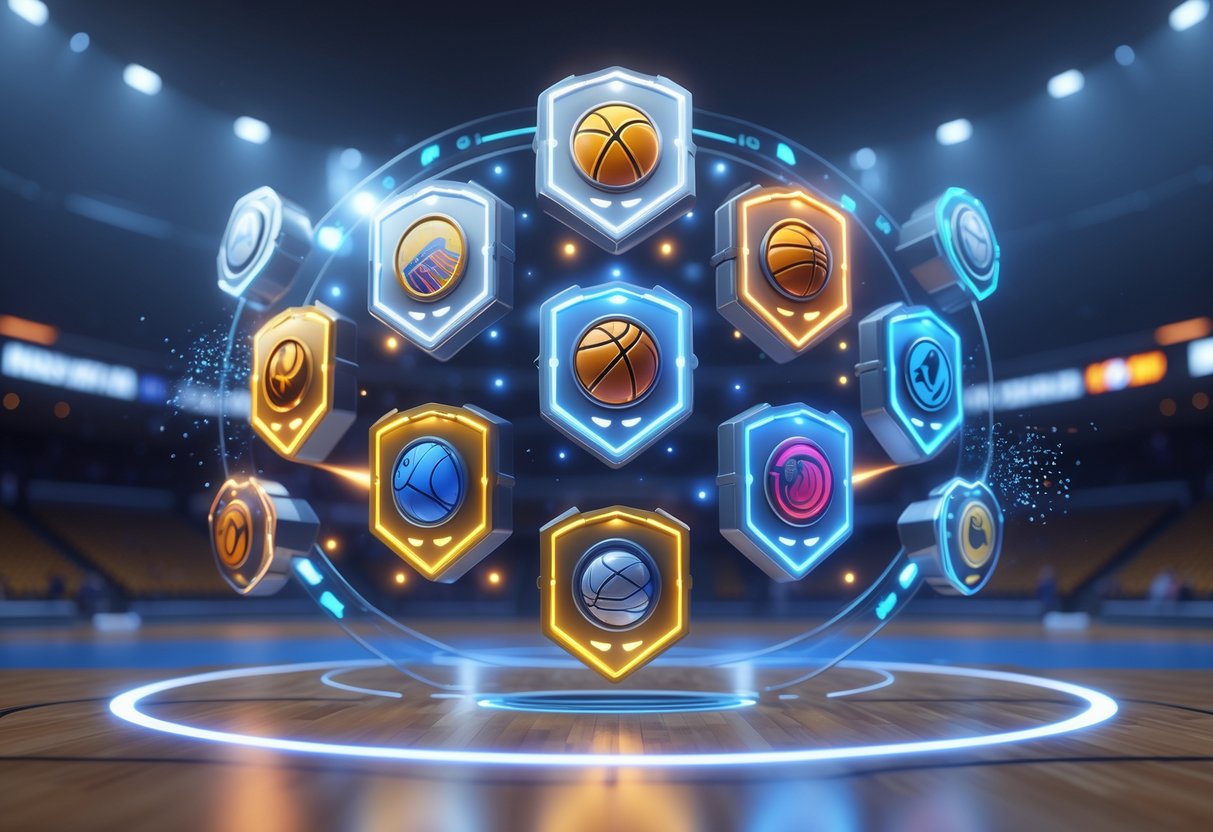
Badges in NBA 2K need you to hit certain attribute levels before you can use them. Higher badge tiers ask for higher attributes, and some badges need more than one attribute to unlock their best versions.
Key Attribute Gates for Badges
Different attribute groups unlock different badges. Mid-Range Shot and Three-Point Shot control most shooting badges like Deadeye and Limitless Range.
For shooting, you’ll need a 73 Mid-Range for Bronze Deadeye, and up to 99 for Legend tier. Three-Point Shot follows similar rules, but some thresholds are a bit different.
Ball Handle unlocks big playmaking badges. For example, Ankle Assassin needs a 75 Ball Handle for Bronze and 98 for Legend. Unpluckable lets you use either Ball Handle at 70 or Post Control at 75.
Pass Accuracy opens up passing badges. Dimer starts at 55 for Bronze but jumps to 98 for Legend, so it’s easy to get early but tough to max out.
Some badges let you unlock them in more than one way. Strong Handle takes either Ball Handle at 60 or Strength at 60 for Bronze. That’s handy for custom builds.
Impact of Strength, Speed, and Vertical
Physical attributes matter too. Strength unlocks Strong Handle as an alternative to Ball Handle, which is nice for bigger guards.
Speed With Ball unlocks Lightning Launch. You’ll need 68 for Bronze and 94 for Legend, which helps smaller, faster players.
Vertical mostly affects finishing and defensive badges. Higher vertical usually unlocks dunking and shot-blocking, though the exact numbers aren’t always clear.
Close Shot and Standing Dunk combine to unlock finishing badges near the rim. These attributes let you finish plays and dunk without needing a running start.
Physical attributes often top out lower than skill ones. That makes them cheaper ways to unlock strong badges without spending all your points.
Special Requirements for Advanced Badges
Height limits which badges you can use. Mini Marksman is only for players 5’9″ to 6’3″, while most badges go up to 7’4″.
Some advanced badges need a combo of attributes. You might need Ball Handle and Strength to unlock higher tiers.
Legend tier badges ask for almost maxed-out stats, usually 97-99. Getting there takes careful planning and lots of points.
Post Control shows up as an alternative unlock for several badges. It’s handy for flexible builds and can stand in for Ball Handle at higher levels.
Advanced badges often hide their real requirements. If you plan your build with these in mind, you’ll save yourself some headaches later.
Optimising Your MyPLAYER Build with Badges
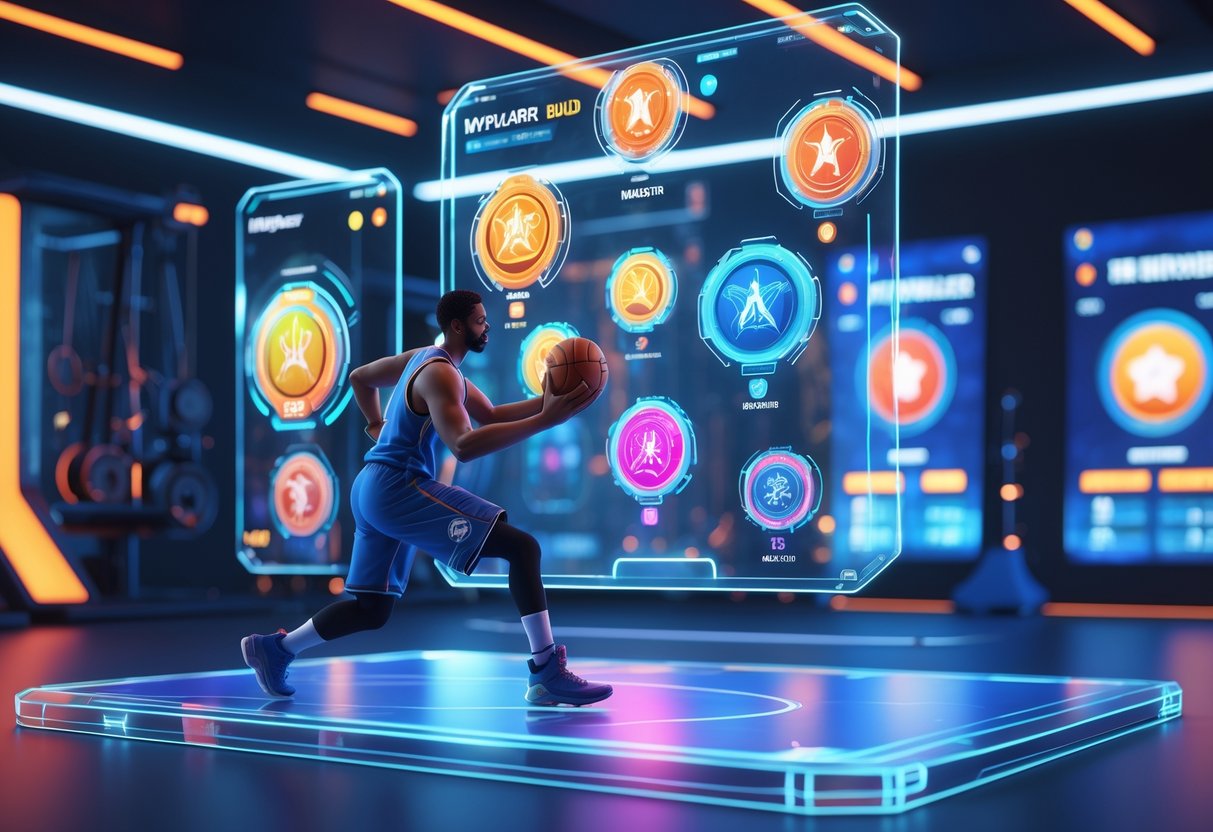
Picking the right badges can make or break your MyPLAYER build in NBA 2K25. Smart badge choices, paired with the right takeovers and steady team practice, can turn an average player into a real problem for opponents.
Choosing the Right Badges for Your Playstyle
Your badge selection should fit how you actually play, not just what looks cool on paper. After 10-15 games, check your stats and see which actions you do most.
Slashers should focus on finishing badges like Fearless Finisher and Giant Slayer. These boost your moves at the rim. If you barely shoot threes, don’t waste points on shooting badges.
Playmakers get the most out of Ankle Breaker and Unpluckable. These badges help you create space and protect the ball. Speed-boosting badges pair well here.
Shooters need Limitless Range and Catch and Shoot as their core. The new Lightning Launch badge speeds up your release, making you tougher to guard.
It’s usually smarter to max out 4-5 core badges instead of spreading points too thin. Bronze badges don’t do much compared to Hall of Fame versions.
The new Legend tier badges take a ton of grinding but give you huge boosts. Only go for them if you plan on putting in serious hours this year.
Synergy with Takeovers
Your badge setup should fit your chosen takeover if you want to get the most out of it. NBA 2K25 offers 72 different takeovers, and each one boosts specific attributes that work best with certain badge combos.
Slashing takeovers just work incredibly well with finishing badges. When you trigger your takeover, badges like Contact Finisher suddenly feel way more impactful. You’ll find yourself blowing by defenders and slamming it home.
Shooting takeovers really boost range and accuracy badges. Your Deadeye badge feels almost unfair when you pair it with a hot shooting takeover. Defenders barely stand a chance on contests.
Check the attribute requirements for your takeover before you lock in your badges. Some takeovers only unlock if you hit certain minimums in speed, shooting, or finishing.
Plan your Cat Breakers to line up with takeover synergies as well. These let you push attributes beyond normal caps, so you can create badge and takeover combos that just aren’t possible at the start.
Jump into practice mode and try different takeover/badge combos. Sometimes what looks great on paper just doesn’t click when you’re actually playing.
Role of Team Practice Facility
The team practice facility can seriously speed up your badge grind if you use it right. A lot of players skip it, but that’s just leaving progress on the table.
Badge-specific drills help you target the exact skills you want to level up. Finishing drills boost slashing badges, and shooting drills help perimeter badges. Do these every day for steady gains.
Gatorade workouts now control stamina, not an attribute. Finish these and you’ll get 99 stamina, so your badges stay effective all game long.
You can unlock permanent body types by finishing workout programs. This saves VC and gives you more ways to customize your player.
Team chemistry activities give badge progression multipliers if you play with teammates who’ve also done the same training. Try to coordinate with your squad for faster progress.
Use the facility between online games instead of just grinding badges in matches. It’s usually way more efficient than hoping for lucky badge gains in competitive games.
Quick tip: Knock out all available drills before you play your first online game. That little boost can make a big difference early on.
Advanced Badge Strategies and Dynamic Combinations
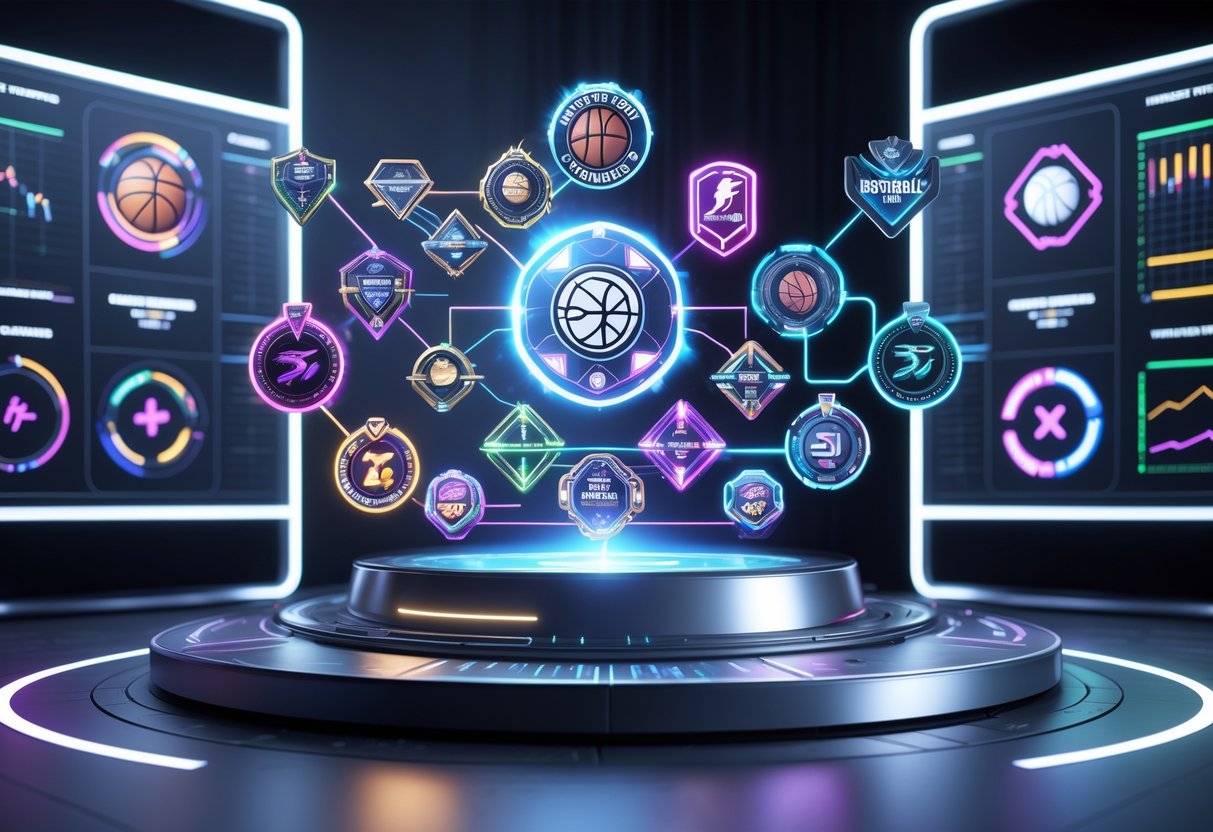
Smart badge combos can turn your player from pretty good to completely dominant. Knowing when to adjust your badges keeps you ahead as the meta shifts. Let’s look at how badges work together, which builds to prioritise, and how to adapt when patches shake things up.
Maximising Badge Synergies
Badge synergies unlock levels of performance you just can’t reach with single badges. If you understand these combos, you’ll build more dangerous players.
Finishing Combinations can be deadly. Precision Dunk links up perfectly with Posterizer and Rise Up. When defenders step up at the rim, Precision Dunk helps you finish clean, while Posterizer punishes anyone who tries to contest.
Playmaking Synergies create wild offensive threats. Spin Cycle gets nasty when you pair it with Ankle Breaker and Space Creator. The spin moves from Spin Cycle set up crossovers that Ankle Breaker turns into highlight plays.
Defensive Badge Stacks let you lock down offenses. Glove and Interceptor start things off, but adding Pick Dodger and Challenger gives you a true perimeter stopper.
Badge perks ramp up these combos even more. Unlocking higher tiers multiplies the synergy effects. A Hall of Fame Limitless Range with Gold Deadeye just feels broken at times.
Pro tip: Always test badge combos in practice first. Some badge synergies only pop off in certain situations.
Situational Badge Selection
Different modes and opponents call for different badge setups. The best players stay flexible and adapt fast.
Park Games need a different approach than Pro-Am. In park, defensive badges like Glove are huge since steals turn straight into points. Go for offensive badges that help with iso moves.
Pro-Am Strategy is all about team play. Pick and Roll Maestro matters more when you’re running set plays. Brick Wall becomes a must for solid screens.
Position Matchups change what you need, too. Facing smaller guards? Stack Post Moves and Bully badges. Up against big centers? Focus on speed and shooting.
Tournament Play usually rewards consistency. Sometimes Steady Shooter does better than Hot Zone Hunter when nerves mess with your timing.
NBA 2K25 removed badge regression, so you can experiment more. Switch up your badge focus based on who you’re playing that week.
Quick tip: Save different badge setups as presets for quick swapping.
Adapting to Meta Changes
The meta never stays still—patches, new badges, and fresh strats keep things moving. If you want to stay on top, keep an eye on trends and tweak your setup.
Patch Updates can totally shift badge power. Watch community forums and patch notes to spot the next hot combos. When devs nerf a popular badge, something else always pops up.
Community Meta Evolution moves even faster than official changes. Top players and YouTubers find new badge combos, and everyone copies them within days.
Seasonal Adjustments shake things up, too. City events might reward certain builds. Competitive seasons can swing the meta toward defense or shooting.
Opposition Analysis helps you plan. If everyone’s running the same offensive builds, defensive badges get more valuable. If shooting takes over, rim protection becomes a must.
Legend tier badges in NBA 2K25 open up new meta options. These higher badge levels change the balance and reward players who adapt quickly.
Pay attention to your win rates with different badge setups. Let your results guide your choices, not just the latest trend.
Key Badge Examples and Their Gameplay Effects
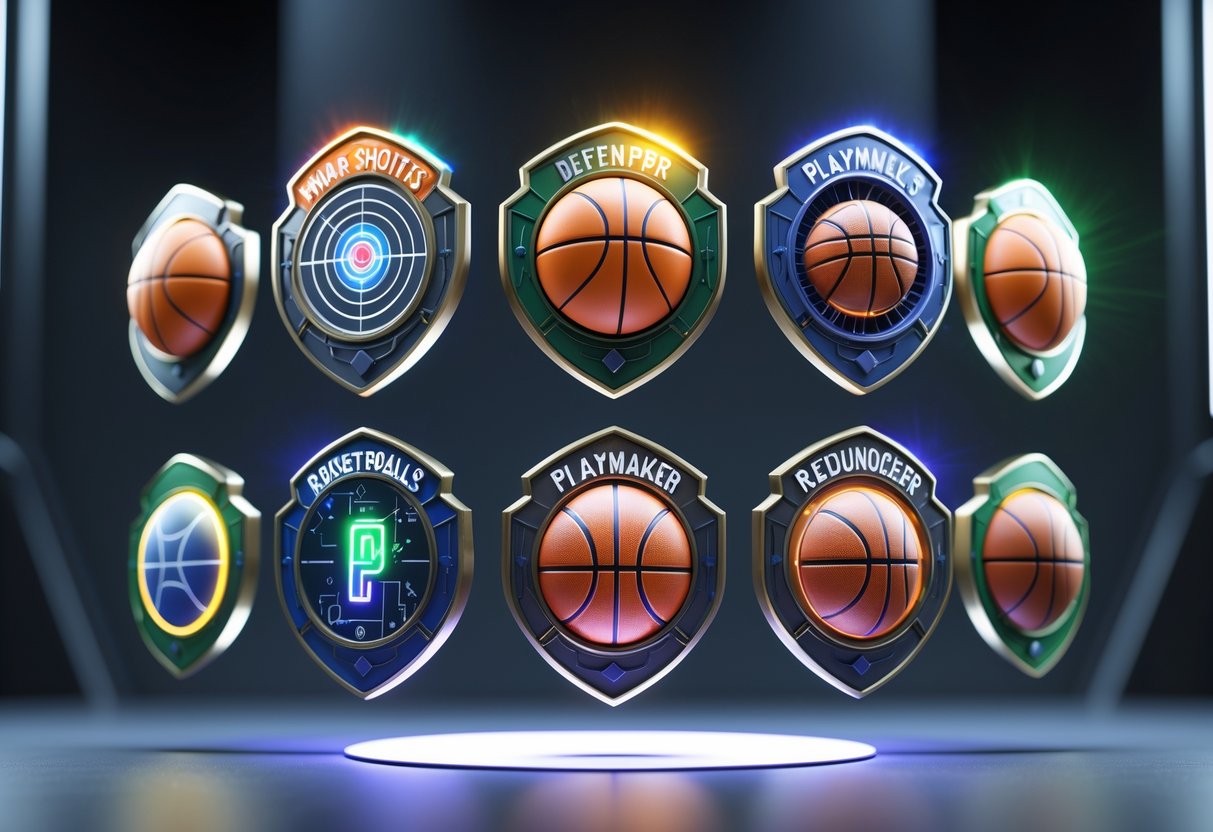
Popular badges in NBA 2K shape how you play in certain situations. Finishing badges help smaller players keep up with taller defenders. Shooting badges let you hit clutch shots when it matters most.
Giant Slayer and Fearless Finisher
Giant Slayer has always been a go-to for smaller builds, but it’s not in NBA 2K25. In its place, players turn to other finishing badges for similar effects.
Layup Mixmaster gives smaller players a boost for acrobatic layups. If you’re under 6’11”, this badge helps you finish wild shots. Physical Finisher lets you power through contact at the rim.
Paint Prodigy is for players 6’3″ and up. It increases paint scoring efficiency. You’ll need a high Close Shot to unlock better tiers.
Combining these badges creates strong finishing lineups. Short guards should pair Layup Mixmaster with Physical Finisher. Taller guys should focus on Paint Prodigy for reliable paint buckets.
Badge Requirements:
- Layup Mixmaster: Driving Layup 75-99 (height capped)
- Physical Finisher: Strength 60+ and Driving Layup 70+
- Paint Prodigy: Close Shot 73-99 (minimum 6’3″)
Catch & Shoot and Clutch Shooter
Catch & Shoot isn’t in NBA 2K25, so players use Set Shot Specialist for similar results. This badge makes your spot-up jumpers more accurate.
Deadeye is clutch for shooting under pressure. It lowers penalties when defenders contest your shots. You’ll need a 73+ in Mid-Range or 3-Point to unlock it.
Limitless Range stretches your shooting out deep. If you love pulling up from way out, this badge is for you. It starts at 83 3-Point for Bronze.
Mini Marksman helps shooters under 6’3″ get shots over taller defenders. Pair it with Deadeye for tough, contested looks.
Shooting Badge Combos:
- Pure shooters: Deadeye + Limitless Range + Set Shot Specialist
- Guards: Mini Marksman + Deadeye + Shifty Shooter
- For contests: Deadeye at Legend tier is king
Defensive Standouts and Playmaking Favourites
The best defensive badges turn you into a lockdown defender. Clamps and Menace are gone in NBA 2K25, so defense works differently now.
Playmaking badges are huge for ball handlers. Ankle Assassin boosts your crossover moves if you’ve got high Ball Handle and are under 6’10”. You’ll need 75+ Ball Handle for it.
Handles for Days reduces how much energy you lose on dribble combos. It’s great for long possessions and works for players up to 7’0″.
Unpluckable keeps defenders from ripping the ball away. You need either 75+ Post Control or 70+ Ball Handle. It’s a must if you handle the ball a lot.
Lightning Launch makes your first step faster on drives. You’ll need Speed with Ball 68+ and to be under 6’11”. It pairs nicely with Ankle Assassin for quick handles.
Key playmaking combos:
- Point guards: Ankle Assassin + Handles for Days + Unpluckable
- Secondary ball handlers: Lightning Launch + Strong Handle + Dimer
Frequently Asked Questions
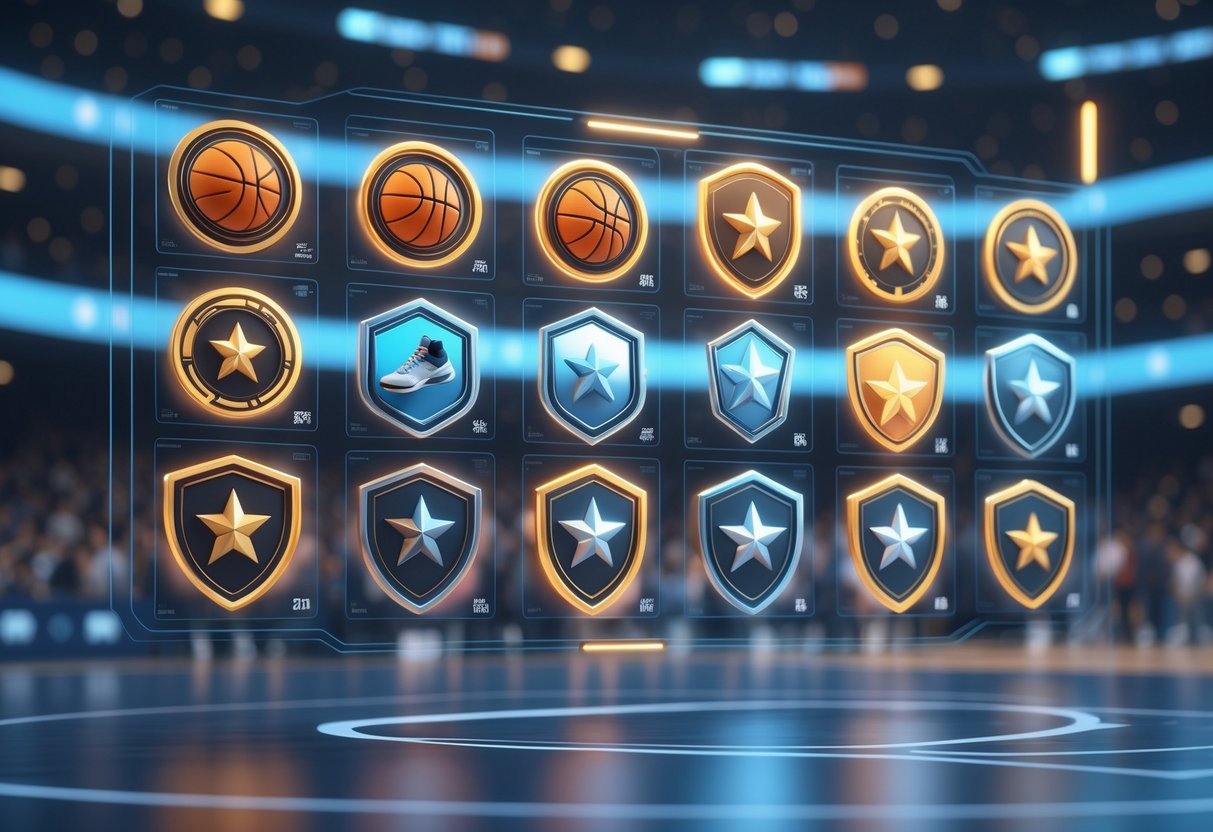
NBA 2K25’s badge system changed a lot—only 40 skill badges remain after a big merge and removal spree. Each badge now has five tiers: Bronze, Silver, Gold, Hall of Fame, and Legend. Every tier comes with specific attribute requirements.
What are the latest badge requirements for the new players in NBA 2K?
NBA 2K25 makes you hit certain attribute ratings to unlock badge tiers. For example, the Aerial Wizard badge needs a 58 Vertical and either a 57 Driving Layup, 64 Driving Dunk, or 60 Standing Dunk for Bronze.
New players should try to unlock Bronze badges first. Physical Finisher needs Strength 60 and Driving Layup 70 to get started.
Some badges are height-locked. Mini Marksman only works for players under 6’3″. Rise Up requires you to be at least 6’6″.
You level up badges by using them in games. The more you use a badge, the faster it climbs to higher tiers.
Could you explain how the badge tiers have changed in the latest NBA 2K game?
The badge system now uses five tiers instead of four: Bronze, Silver, Gold, Hall of Fame, and Legend.
Each level asks for higher attribute ratings. For example, Posterizer jumps from Driving Dunk 73 at Bronze to 99 at Legend.
Legend is the top badge tier. Most Legend badges need ratings in the high 90s, so only elite builds get there.
Attribute requirements are more detailed now. Many badges need you to hit certain levels in more than one attribute at the same time.
Which badges should one prioritise to enhance player performance in the latest NBA 2K release?
If you attack the rim a lot, go for finishing badges like Physical Finisher and Posterizer. They help you finish through contact and dunk on defenders.
For shooters, Deadeye and Set Shot Specialist are top picks. These lower penalties from contests and boost spot-up accuracy.
Playmakers get the most out of Dimer and Unpluckable. Dimer helps your teammates hit shots, and Unpluckable keeps you safe from steals.
The best badges depend on your build and role. Guards should lean into playmaking, while centers need finishing and rebounding.
What’s the best way to navigate the updated badge system for coaches in the new NBA 2K?
Check each player’s ratings against badge requirements to plan upgrades. Understanding the requirements is key for building a strong team.
Pick badges that fit your team’s playstyle. Fast-break teams need Break Starter, while half-court squads want post-up badges.
Watch badge progression during games and see who’s developing fastest. Players who use their badges a lot will level up more quickly.
Keep height and build limits in mind when assigning roles. Some of the best badges only unlock for certain heights.
Can you guide me through understanding the significance of each badge in the current NBA 2K?
Finishing badges make scoring near the basket a lot easier. Paint Prodigy helps you finish close shots, while Hook Specialist gives your hook shots a real boost.
Shooting badges matter if you love jump shots. Limitless Range lets you pull up from way downtown, and Shifty Shooter helps you nail those tough off-the-dribble looks.
Playmaking badges really shake up ball-handling and passing. Ankle Assassin makes your crossovers deadlier, and Lightning Launch lets you explode to the hoop faster.
Each badge category shapes your gameplay in its own way. Picking the right ones depends on your style and where you like to play.

